In a series of short articles, we will try to address the business transformations induced by technological innovations and the so-called digital innovations.
We will have to pretend to be futurologists, but we will base our visions on facts observed concretely, avoiding perspectives that are too uncertain.
A Digital Revolution
Why is there so much talk today about a digital platform? Simply because it makes you dream! A simple observation: When we compare the 10 largest capital values in the world, the evolution is impressive:
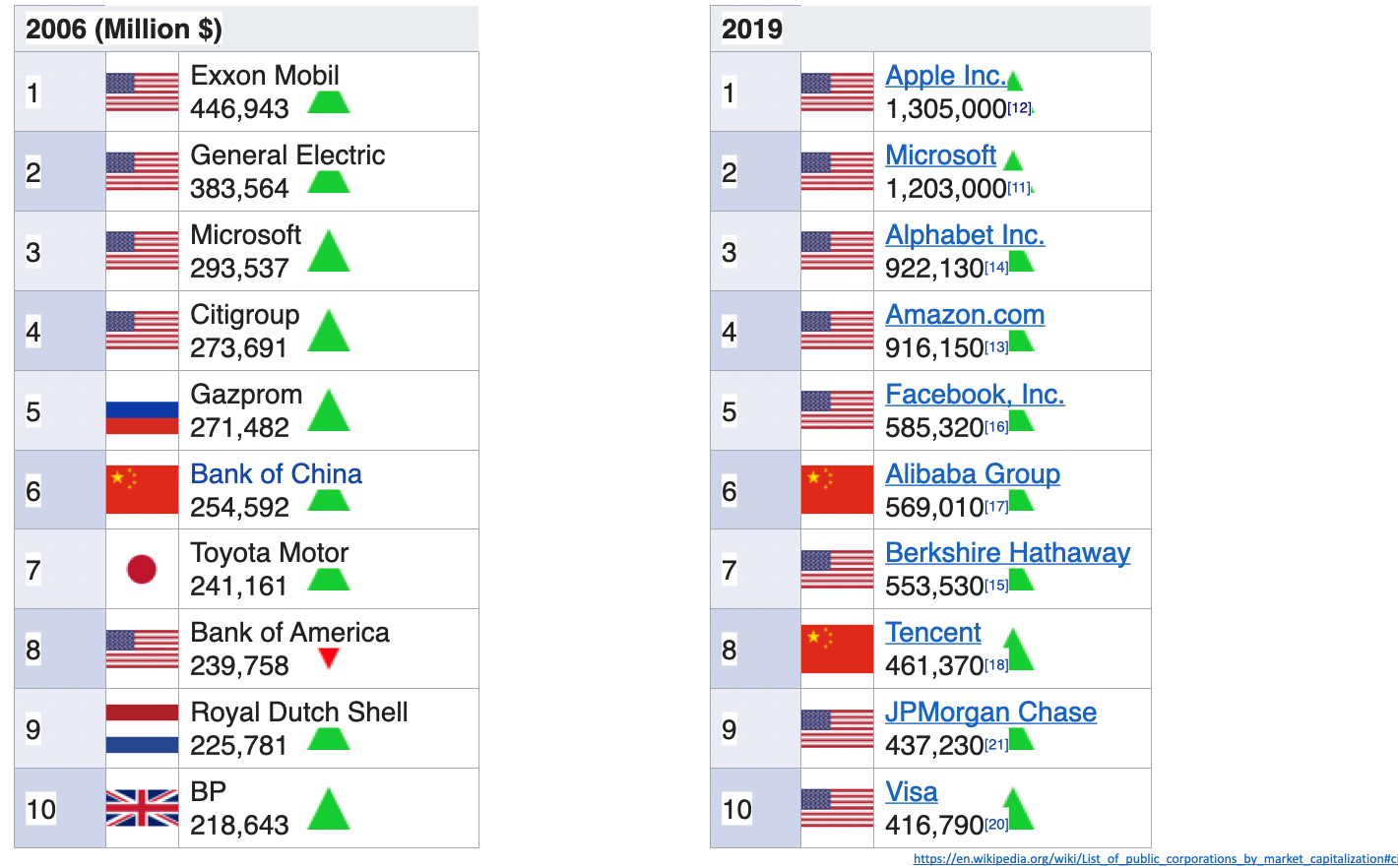
In 2006, the 10 largest valuations were manufacturers or banks.
In 2019, the world’s highest valuations that have replaced Exxon and General Electric include Alphabet (Google) and Amazon platforms.
It is not only the massive use of computer technology that has made this revolution. It is, above all, the understanding that wealth is no longer simply found in the added value of a product (which can only grow linearly), but rather in the value indirectly captured by the (networked) relationship between the service provider and service consumer.
The great economic schism opposes two visions of the business world: the traditional vision which, until the end of the 20th century, aimed at positioning a maximum barrier to the entry of new participants or the achievement of competing businesses. This conservative position is opposed to a modern vision in total orthogonality where we reason in terms of the strength of the ecosystem and where it is essential to erase all barriers to the entry of new players, customers or partners, who then participate in your growth.
The Network Economy
This new vision, although born in the late 1970s in California universities, did not develop until the beginning of the 21st century. It is what we generally call the “network economy.”
But what is the miracle recipe of this new economy that has allowed companies that did not exist 20 years ago to be in the top 10 capital gains?
How do you become a surfer on the wave of this new economy?
Let’s try to analyze the situation to better understand it.
Let’s take a step back and look at the capitalistic evolution of the winners of the network economy. What is the shape of this evolution, what is the shape of their growth curve?
Let’s look at some of them:
The first example, let’s look at the growth of Facebook:
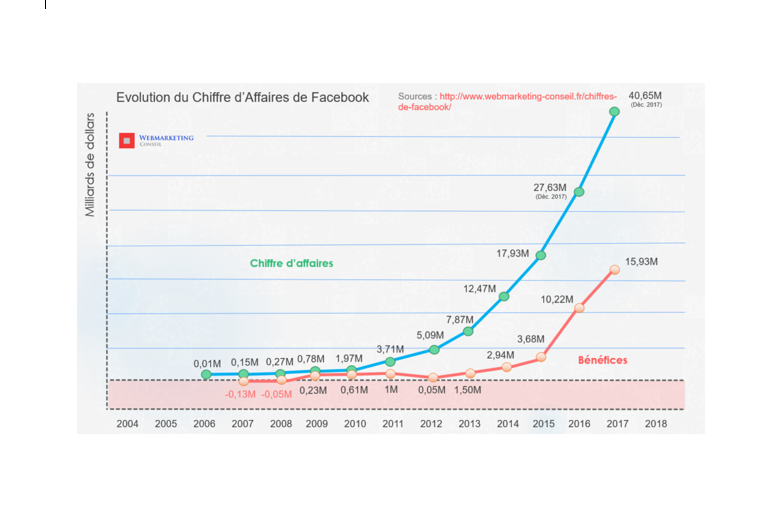
The second example, let’s look at Google’s turnover:
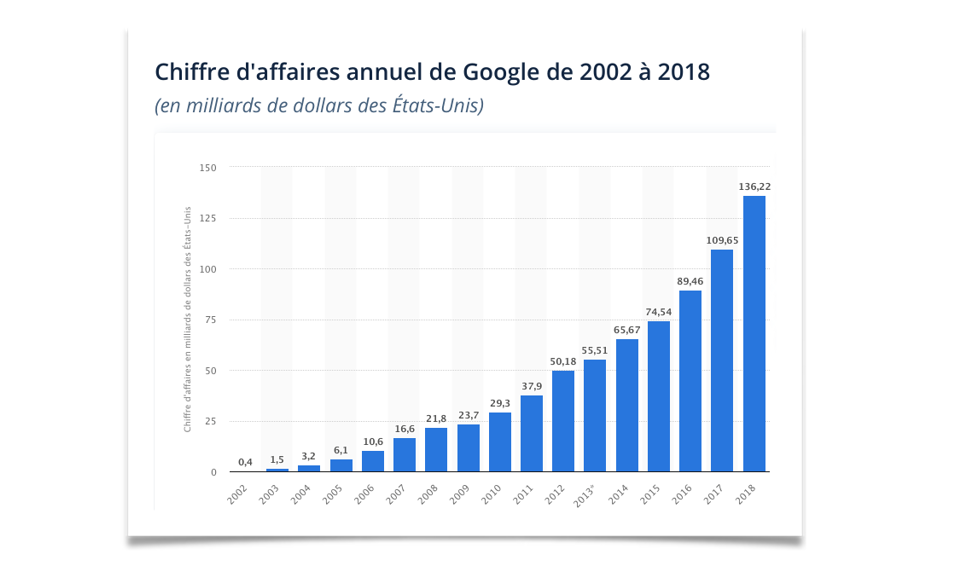 Another good example, let’s look at the comparative evolution of Amazon and Walmart:
Another good example, let’s look at the comparative evolution of Amazon and Walmart:
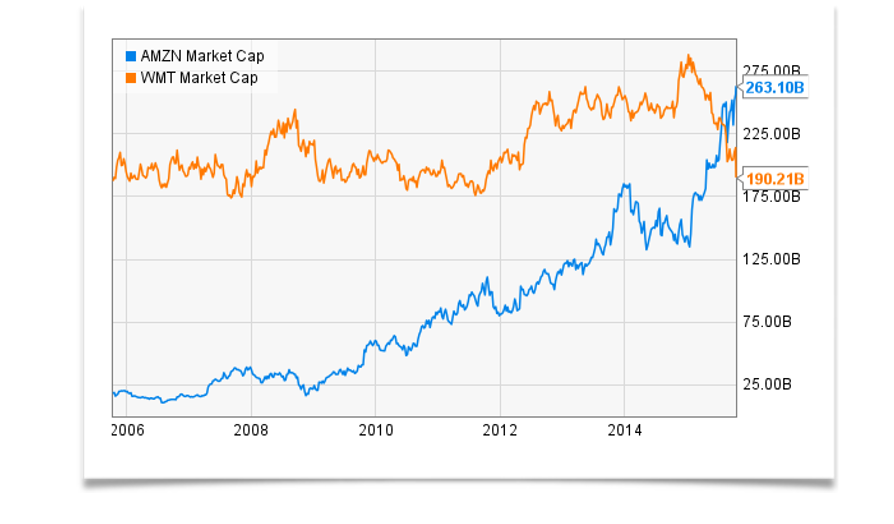 What can we deduce from this? That the big difference between the evolution of traditional companies and the evolution of companies in the network economy is based on a de-linearization of the growth model which is more like an exponential evolution.
What can we deduce from this? That the big difference between the evolution of traditional companies and the evolution of companies in the network economy is based on a de-linearization of the growth model which is more like an exponential evolution.
Traditional vs Network Economy
The industrial era was driven by linear laws, which we have all learned from economics. If two machines produce 100 cars a day, three machines produce 150 cars a day. This is a bit simplistic, reductive, but not so false and all industrial business plans are based on the composition of similar affine functions.
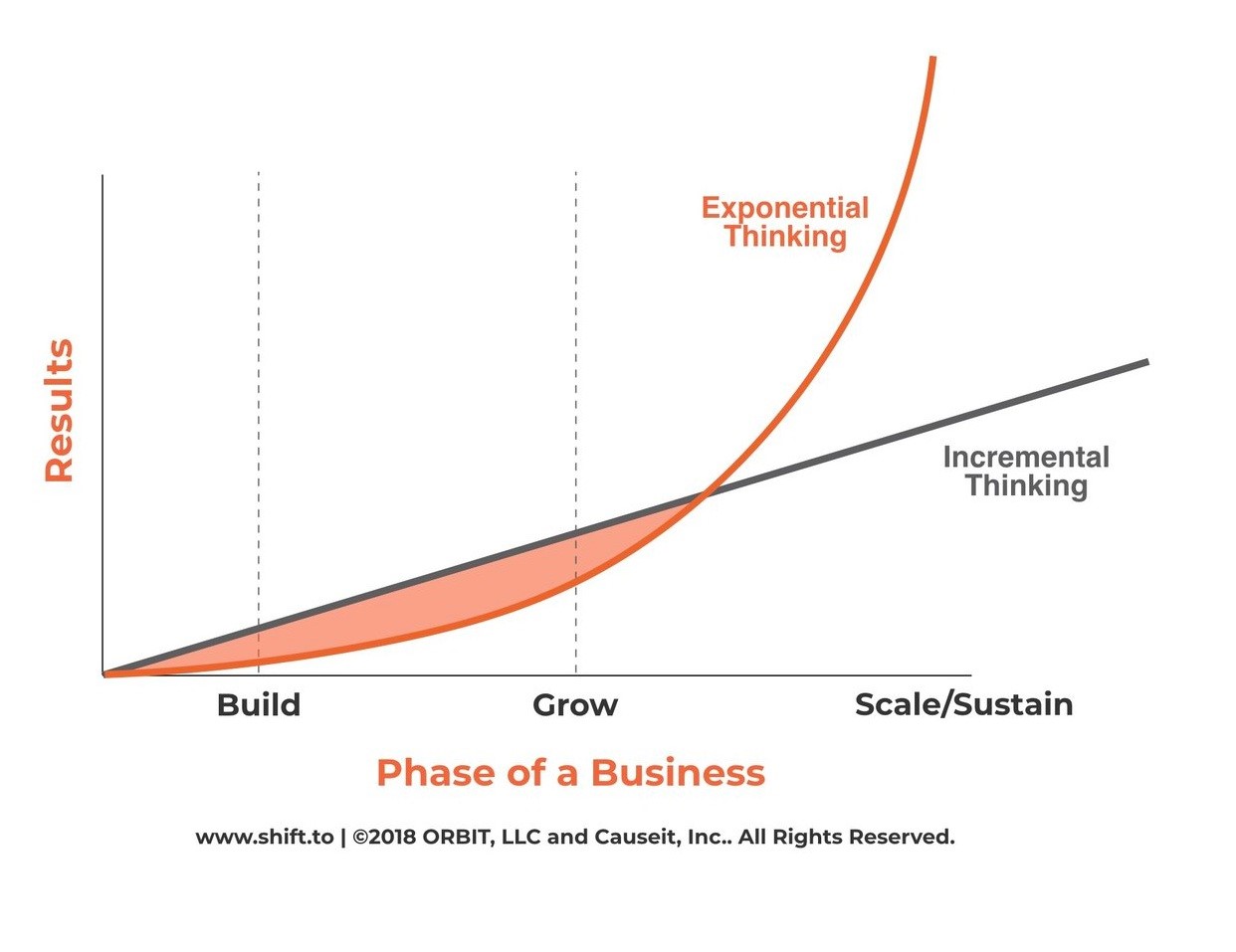
The big difference with the companies of the new economy (the network economy) is that these companies no longer rely on industrial production lines evolving by affine functions, but on digital laws, because they no longer use physical assembly lines, but digital tools: computing power, network power.
The evolution of computing power depends directly on the evolution of the power of microprocessors, which follows an exponential law, Moore’s law. This empirical law, born from the conjecture of Gordon Moore, Intel’s father, predicts a doubling of the computing power of computers every 18 months: an exponential curve.
Concerning the power of networks, by which we mean the value of a network, this value follows another exponential law, Metcalfe’s law, which dictates a valuation growth that evolves according to the square of its users. So, we are well within an exponential function here as well.
The difficulty, for the average person, is to become aware of the enormous acceleration of the power brought by these exponential evolutions, compared to the power of a linear evolution. It is not easy for a human to “think exponentially.”
We can try by giving a concrete example: If the evolution of automobiles followed an exponential function, we would all have a car in our garage that would run at 500 mph, while consuming 200 miles per gallon and cost $1.5!!!
Another example of exponential law: Let us imagine a journey of several stages, 30 for example. If at each stage, we add 30 cm (we make a 30 cm step), after 30 steps, we have advanced 9 m. But if instead of adding 30 cm, we double the distance traveled at each step. The first step will always be 30 cm, the second 60, at the third we will be 1.2 m, and can you guess what the distance traveled at the 30th step would be? The distance from the Earth to the Moon!
This force, this difference in power, some entrepreneurs in Silicon Valley quickly apprehended it and based all the efforts of their business to position themselves on these exponential laws. Taking advantage of digital technological innovations (AI, Big Data, APIs) and the growth of their networks, they built platforms that, by bringing exponential value to an equally exponential growth of their users, had an equally exponential economic result!
We all have in mind some concrete application of these benefits through the success stories of Amazon, the largest bookstore without a single bookstore, Uber, the largest taxi platform without a single car or Airbnb, the largest hotel business without a single hotel!
It is these platforms that we will discuss in the next few articles. We will analyze in a future article the technological tools to be put in place to position ourselves as a platform, then we will study, by business verticals, the impact of new technologies, and the assets that could bring new economic giants into being, or more humbly save some industries from bankruptcy in the short term.
Follow us in the adventure of technological innovation, of an open world via APIs, a world of ecosystems, think exponential, think platform.
Download the whitepaper, Modernize your IT infrastructure with APIs.
Stay tuned for the next chapter.


